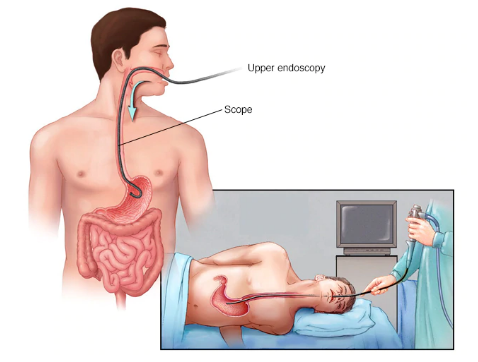Overview
An upper endoscopy is a procedure used to visually examine your upper digestive system with a tiny camera on the end of a long, flexible tube. A specialist in diseases of the digestive system (gastroenterologist) uses endoscopy to diagnose and, sometimes, treat conditions that affect the esophagus, stomach, and beginning of the small intestine.
The medical term for an upper endoscopy is esophagogastroduodenoscopy. You may have an upper endoscopy done in your doctor’s office, an outpatient surgery center or a hospital.

Risks
An endoscopy is a very safe procedure. Rare complications include:
- Bleeding. Your risk of bleeding complications after an endoscopy is increased if the procedure involves removing a piece of tissue for testing (biopsy) or treating a digestive system problem. In rare cases, such bleeding may require a blood transfusion.
- Infection. Most endoscopies consist of an examination and biopsy, and risk of infection is low. The risk of infection increases when additional procedures are performed as part of your endoscopy. Most infections are minor and can be treated with antibiotics. Your doctor may give you preventive antibiotics before your procedure if you are at higher risk of infection.
- Tearing of the gastrointestinal tract. A tear in your esophagus or another part of your upper digestive tract may require hospitalization, and sometimes surgery to repair it. The risk of this complication is very low, but it increases if additional procedures, such as dilation to widen your esophagus, are performed.
- Reaction to sedation. Prior to your upper endoscopy, you’ll likely be given sedation so that you’ll be better able to tolerate the procedure. The type of sedation varies, and adverse reactions are possible but rare. You will be monitored closely during the procedure to reduce the risk of serious reaction.

